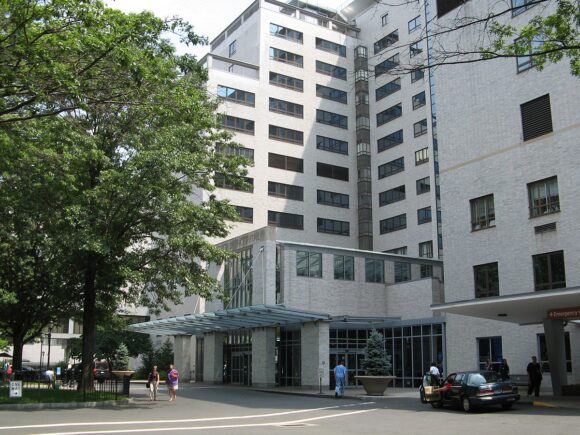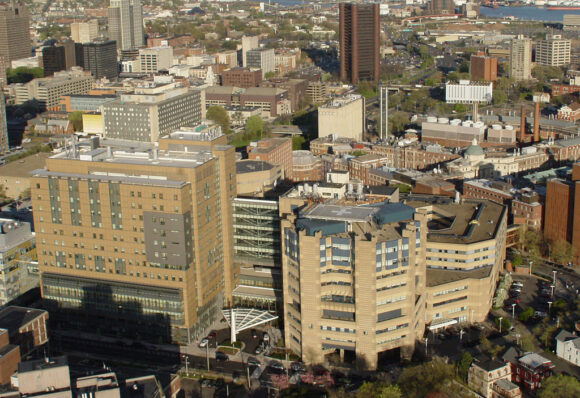
The healthcare landscape has changed remarkably in Connecticut.
You may have noticed some name changes, new signage, and that “opportunities” for care have increased to a level that rivals access to coffee. In this essay, I’m going to review this new landscape, and consider why it developed. My goal is to help the reader make sense of Connecticut’s new, and still evolving, hospitals roster.
I begin this review in Hartford, where healthcare system changes are really representative of the industry’s overall transformation. In addition, because I was a member of Saint Francis Hospital’s attending and management staff for 10 years in an earlier part of my life, I know the players.
In the mid-1970s, Hartford was well-served by three independent hospitals in, what appeared to be, a stable healthcare environment. The oldest, Hartford Hospital, was founded in 1854 by the local medical society, actually in response to an industrial accident — a steam boiler explosion. Saint Francis Hospital, which was established in 1897 by the “Sisters of Saint Joseph”, is now the largest Catholic hospital in New England. A third, smaller hospital, Mount Sinai, was founded in 1923 to provide a facility for Jewish doctors, who were unable to obtain staff privileges in the other two.
Then, an extraordinary makeover of that local system of independent hospitals began in1995 when Mount Sinai merged with Saint Francis, which was one of the first occasions in the United States of a formalized relationship between stand-alone Catholic and Jewish hospitals. The facilities that once housed Mount Sinai became the Mount Sinai Rehabilitation Hospital.
By 2015, Saint Francis had already become part of Trinity Health of New England, an “integrated health care delivery system”, with five hospitals; which, in turn, is a member of Trinity Health, a Catholic health system with 93 hospitals in 22 states!
Drivers of Mergers and Affiliations:
Such deals are growing across the United States. Some of the motivation can be attributed to the hospital industry’s response to healthcare reform and managed care, both of which often involved negotiated reimbursement schemes and utilization review programs. Clearly, larger hospital groups are in a stronger position to negotiate compensation rates with payors and regulators.
In addition, smaller independent hospitals may also consider some sort of affiliation with a larger organization to both improve their capacity to secure capital for programs and facilities, take advantage of resultant economies of scale; and to attract and retain, or simply get access to, physicians in some of the more arcane medical specialties.
Although I had knowledge of the events discussed below, as they occurred, reviewing them as a continuum is really stunning and demonstrates the great breadth and scope of the two major Connecticut hospital groups.
The Hartford Juggernaut:

In 1994, Hartford Hospital began its transformation from local independent hospital into a “statewide, integrated health system”, when it merged the venerable Institute of Living — founded in 1822 as a private, residential psychiatric hospital — into the hospital’s Department of Psychiatry. The Institute had gained some international notoriety for its treatment of silent movie stars like Clara Bow, errant clerics, and an early adoption of a science-based model of care.
Further, in 1996, pediatric patients from Newington Children’s Hospital, the University of Connecticut Health Center, and Hartford Hospital were all relocated to the new Connecticut Children’s Medical Center, constructed contiguous to the Hartford Hospital campus.
Planning for this new hospital had actually begun in 1986, when Newington and Hartford agreed to construct a new facility. Extraordinarily, this new alliance was designed to span care from infancy, through childhood, adolescence and young adulthood; and finally transitioning to adult care.
Last October, the Hartford Courant reported that the Hartford HealthCare system now, “… serves 185 towns and cities and is within 15 miles of every Connecticut resident.” It includes seven hospitals, roughly stretching diagonally across the state from Windham and Backus Hospitals in the northeast to St Vincent’s in the southwest. The data are daunting: almost 30,000 employees, nearly 2,500 licensed beds, and operating revenue of $4.3 billion.
The Yale Dreadnought:

Development of the “grandmother of all CT hospitals” began in 1826, when the Connecticut General Assembly authorized 10 incorporators to establish the General Hospital Society of Connecticut, which was chartered as the first Connecticut hospital in New Haven, and the fourth voluntary hospital in the United States. (i.e., a private nonprofit hospital.)
A new 13-bed hospital opened in 1833; and served as the primary teaching hospital for the Yale medical school, which was founded in 1810 as the Medical Institution of Yale College.
In 1884, the hospital’s name was changed to New Haven Hospital, reflecting the name that was commonly used at the time; and then, in 1945, Grace-New Haven Hospital, to acknowledge an affiliation with neighboring Grace Hospital. And finally, in 1965, as the relationship with the University became more formalized, Yale New Haven Hospital.
Now moving forward, perhaps Al Jolson described it best in the 1927 film “The Jazz Singer” … “you ain’t heard nothing yet”.
In 1996, the hospital began its transformation into the “Yale New Haven Health System” (YNHHS), when it entered into a partnership with Bridgeport Hospital; and further expanded in 1998, with the addition of Greenwich Hospital.
In 2012, they acquired the assets of the Hospital of Saint Raphael, which was founded by the “Sisters of Charity of Saint Elizabeth” in 1907, and also located in New Haven.
In 2016, ownership of New London’s Lawrence and Memorial Hospital was assumed by YNHHS, which also included L&M’s earlier acquisition of Westerly Hospital, consummated in 2013.
The Yale data are equally daunting: a year ago, YNHHS reported 2,681 licensed beds, 28,589 employees, and total assets of $6.5 billion. The system now includes five acute care hospitals, the Smilow Cancer Hospital, Yale New Haven Children’s, and Psychiatric Hospitals, and a multispecialty medical group with more than 1,000 physicians; yielding a sphere of medical influence along the shoreline from Westchester County to Westerly, RI.
Independent Stand-Alone:
Middlesex Health, which is centered around Middlesex Hospital and an extensive network of community-based outpatient services, remains independent. Middlesex joined the Mayo Clinic Care Network in 2015, which enables their medical staff to easily consult with and take advantage of the broad expertise of the Mayo Clinic in diagnosing complex cases. The relationship with Mayo Clinic is not an acquisition or a merger, but an intellectual partnership (my words). They are the first hospital in CT and only the second hospital in New England to join the network.
Satellites:
Most patient encounters with these hospital systems will occur in outpatient settings outside the hospital campus. These can include urgent care centers, blood draw and diagnostic imaging centers, group practices; and more comprehensive sites like the Pequot Health Center (L&M/YNHHS) in Groton, which provides primary care services on a walk-in basis. diagnostic imaging, blood tests, and same day surgery (e.g., cataracts).
The growth of these outpatient sites has been facilitated by electronic medical records and digital radiographs. These records can be shared across different health care settings. via secure enterprise-wide information systems. This technology would also enable the type of relationship that Middlesex has with Mayo.
I was surprised that Hartford Healthcare has opened eighteen “Go Health” urgent care centers from Montville to Torrington. Go Health Urgent Care is a national company headquartered in Atlanta; with nearly 200 urgent care centers in AK, CA, CT, DE, MO, NY, NC, OK, OR, and WA “through partnerships with market-leading health systems”.
Author’s Notes: Hospital mergers and acquisitions show no signs of slowing down in the United States., and, as economic, regulatory, and operational challenges continue, many community hospitals will consider whether or not they should remain independent, or affiliate with another hospital or health system.
There are a range of affiliations that a hospital’s leadership can consider, from a fairly simple cooperation agreement among hospitals for group purchasing, to an acquisition of one facility by the other, in which all control is surrendered to the acquiring entity. In the above, I used news reports from the “Hartford Courant”, “New Haven Register”, the “Providence Journal”, and information published by the hospital group, to define the type of affiliation.
In closing, there is an additional wrinkle to hospital transformation. This morning, while watching the News, Dr. James Cardon came on and did a commercial for CarePartners of Connecticut, a Medicare supplemental insurance company formed in 2018, by two leading organizations; Hartford Healthcare and Tufts Health Plan. “When doctors and a health plan work together, it simplifies patients getting the care they need. That’s what CarePartners of Connecticut is committed to.”
For me, this addition is beyond “stunning.”
Editor’s Note: This is the opinion of Thomas D. Gotowka.

Tom Gotowka
About the author: Tom Gotowka’s entire adult career has been in healthcare. He’ will sit on the Navy side at the Army/Navy football game. He always sit on the crimson side at any Harvard/Yale contest. He enjoys reading historic speeches and considers himself a scholar of the period from FDR through JFK.
A child of AM Radio, he probably knows the lyrics of every rock and roll or folk song published since 1960. He hopes these experiences give readers a sense of what he believes “qualify” him to write this column.